How to grow hyacinth bulbs in containers for a spectacular spring show
Experts explain how to create colorful spring displays by growing these fragrant flowers in pots and containers
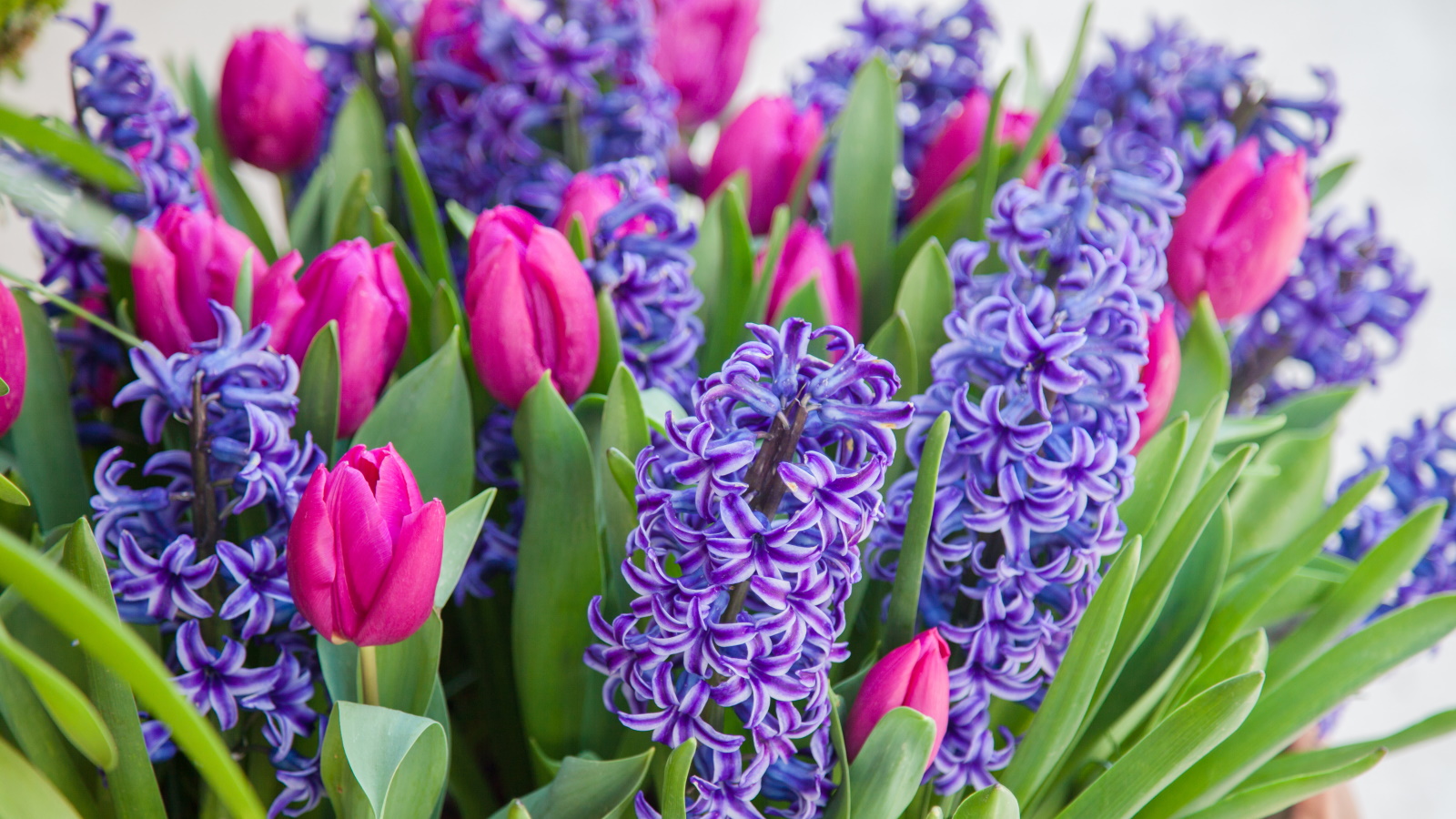

Hyacinths are perennial bulbs celebrated for their bright color, fragrance and attractive, bell-shaped flowers. Considered one of the best spring bulbs to plant, the hyacinth is a harbinger of warmer spring days and with a heavenly scent that is unrivaled in the garden.
When thinking about planting combinations and ideas for your backyard, there are many different varieties of hyacinth to choose from, ranging from pure whites to royal blues to deep reds. If you would prefer something showy this year, and none of these colors appeal, fear not, as surely a Barbie pink display will turn heads. There are pink varieties available to buy from garden stores, such as this Cotton Candy Hyacinth Mix from Walmart. Hyacinths, it seems, are anything but subdued.
Importantly, it is not too late to plant hyacinths. Whilst it is recommended to plant in fall, planting in winter - so long as the bulbs are healthy - will still give you a bounty of blooms. Just remember that planting in winter will result in later flowering bulbs.
Whilst it is perfectly fine to plant hyacinth bulbs directly into the garden or yard, by using a spare container or planter for your bulbs, you'll be able to create a display to position on your front porch, or move it around to brighten up any colorless spot.
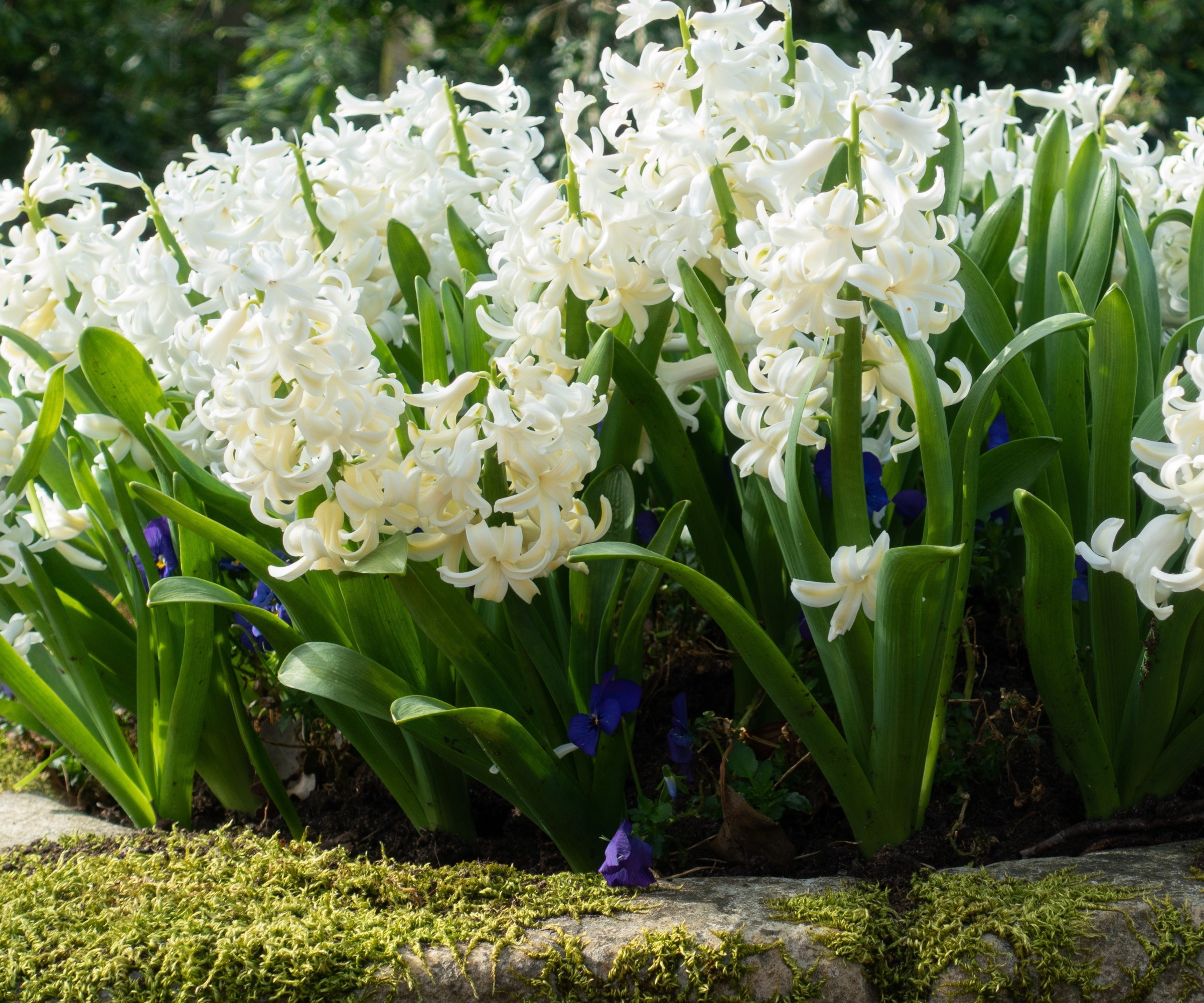
Grow hycainth bulbs in containers
Follow our advice and simple steps to grow hyacinth bulbs in containers and enjoy a show stopping spring display this year.
Things to consider when growing hyacinth bulbs in a container
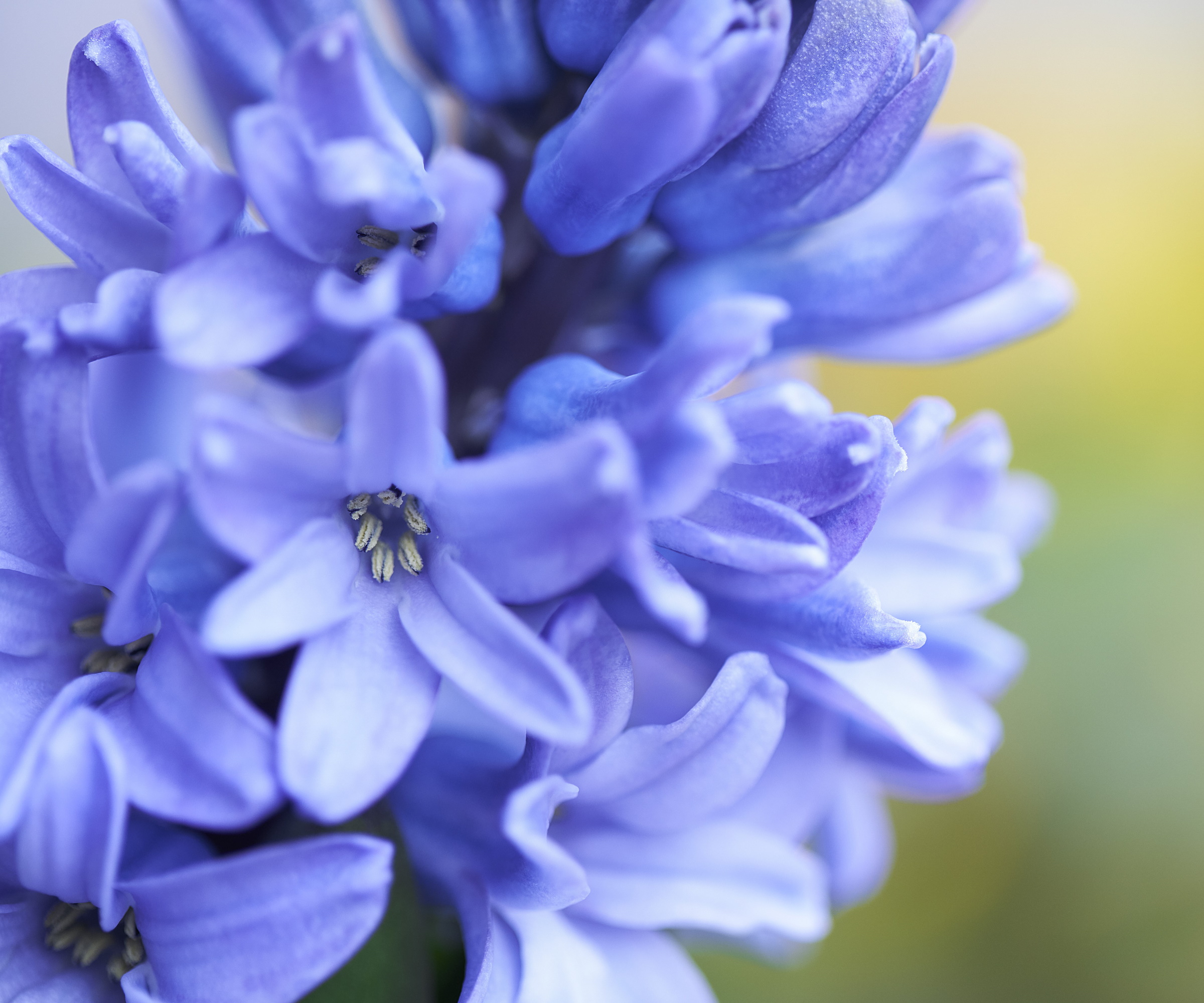
Hyacinths trace their origins to the eastern Mediterranean and southern Turkey. Over the last two hundred years, they have become popular plants to grow and hyacinth breeding has created the vast array of colors we can find today.
Growing hyacinths in pots is a great option to create a dramatic display whether you have a large backyard or you have limited outside space. Any container will do, but remember that hyacinth bulbs are slightly larger than other popular bulbs, such as daffodil bulbs or tulip bulbs.
'Hyacinth orientalis is a pretty big bulb,' says Megan Foster, perennial and bulb expert for American Meadows. 'The rule of thumb is to dig deep enough so that the bulb in the hole will sit about three times deeper than the size of the bulb.' This is important to remember when selecting your container, and any smaller pots or planters are perhaps better used for smaller bulbs. Planting your bulbs down deeper is also a way to stop squirrels from digging up bulbs.
If your backyard is damp and suffers from poor drainage, it is recommended to use 'pots for your bulbs,' Megan says, as bulbs can 'rot if sitting too long in saturated soil.' Read our guidelines below on how to successfully grow bulbs in a container.

Megan Foster (MF) – American Meadows Perennial and Bulb Expert
Megan is the perennial and bulb expert for AmericanMeadows.com since 2019. With a keen eye for color and passion for pollinators she curates pre-planned gardens for the brand. Her instinct for what gardeners want also drives the spring and fall bulb assortments. She gardens in zone 5 in Vermont.
How to plant hyacinth bulbs in a container
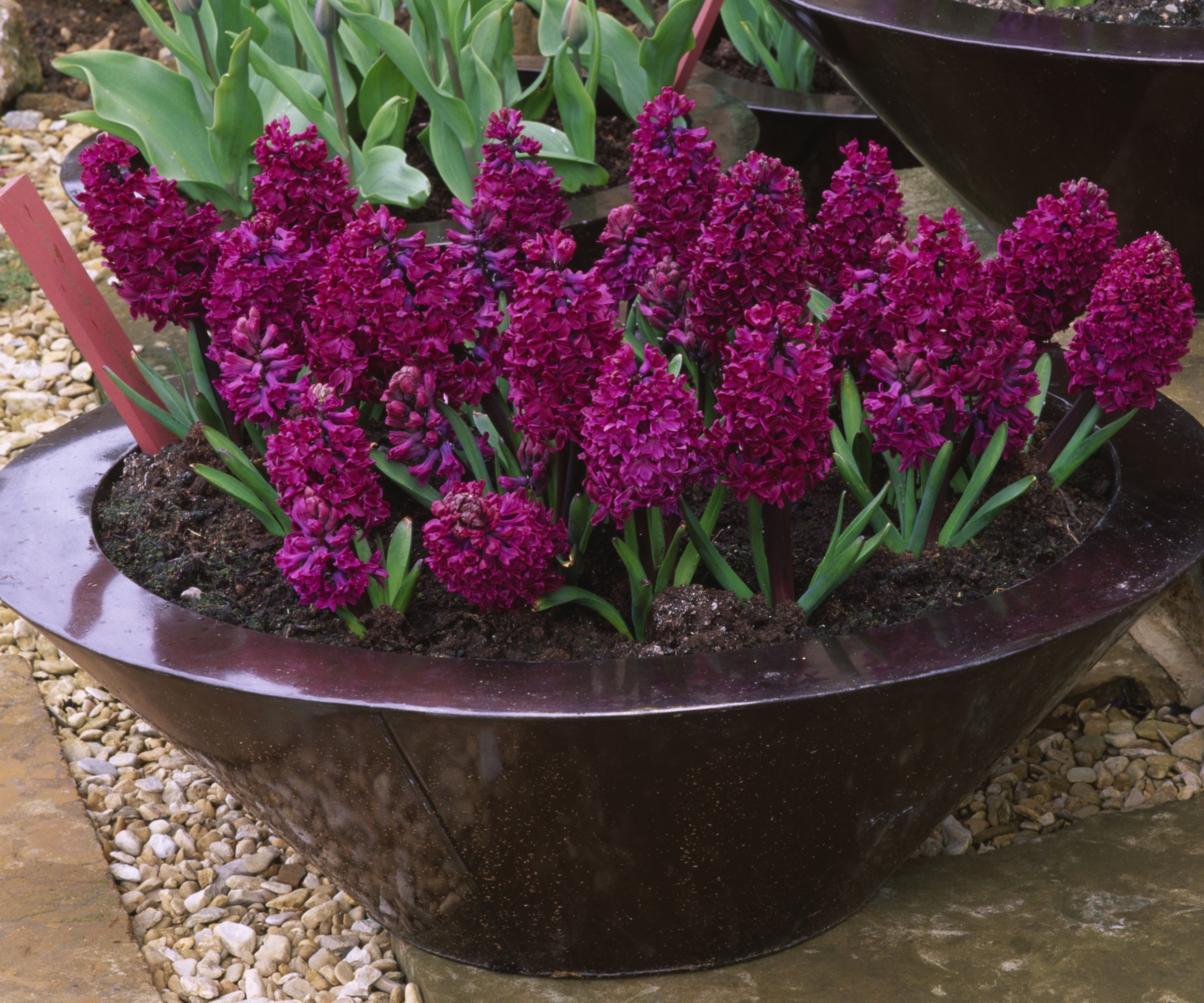
- Ensure that your planter or container has a drainage hole to allow water to drain away.
- Using old, broken bits of stone or pot, cover the drainage hole to prevent a soil blockage that would prevent water from draining away.
- 'The ideal soil would drain freely,' says Vanessa Elms, horticulturist and owner of Old House Gardens. 'We do not recommend any potting soil that contains moisture retention as it can lead to bulb rot.'
- Remember to plant your bulbs three times the depth of the bulb, covering them with your free-draining potting soil mix.
- Place your container in a 'cool, sunny area,' Vanessa says. Avoid placing the container in a shaded location as this will not encourage growth.
- Water your container during mild weather. Do not let the container dry out.
- 'If you are growing hyacinths in a pot, fertilizing is not necessary as the bulb has what it needs to bloom,' Vanessa continues.
- After flowering, in the springtime, Vanessa recommends 'planting the bulbs in the garden to let mother nature take care of them.' Ensure you plant the bulbs at a depth three times the size of the bulb, and maybe, just maybe, they might return and rebloom next year.

Vanessa Elms is a horticulturist and the owner of Old House Gardens, a business devoted entirely to heirloom bulbs, many available nowhere else, and an international leader in the preservation of these fabulous relics.
FAQs
When should I plant hyacinth bulbs?
It is recommended to plant hyacinth bulbs in the fall, however, planting bulbs in winter will still yield stunning flowers. Remember that the later you plant your bulbs, the later in the year they will flower. If planting bulbs in the winter, always check the quality and health of the bulbs. A firm, plump bulb is what you want, with no mold or signs of damage.
Planting hyacinth bulbs in containers is a great space-saving option that will not disappoint, with bright blooms and a heavenly fragrance creating the perfect spring display. Consider our guide on how to deadhead and care for hyacinths to ensure that your spring show is the best it can be.
Sign up to the Homes & Gardens newsletter
Design expertise in your inbox – from inspiring decorating ideas and beautiful celebrity homes to practical gardening advice and shopping round-ups.

Thomas is a Content Editor within the Gardens Team at Homes and Gardens. He has worked as a professional gardener for both public spaces and private estates, specializing in productive gardening, growing food and flowers. Trained in Horticulture at the Garden Museum, he has written on gardening and garden history for various publications, including The English Garden, Gardens Illustrated, Hortus, The London Gardener and Bloom. He has co-authored a Lonely Planet travel book, The Tree Atlas, due out in 2024.
-
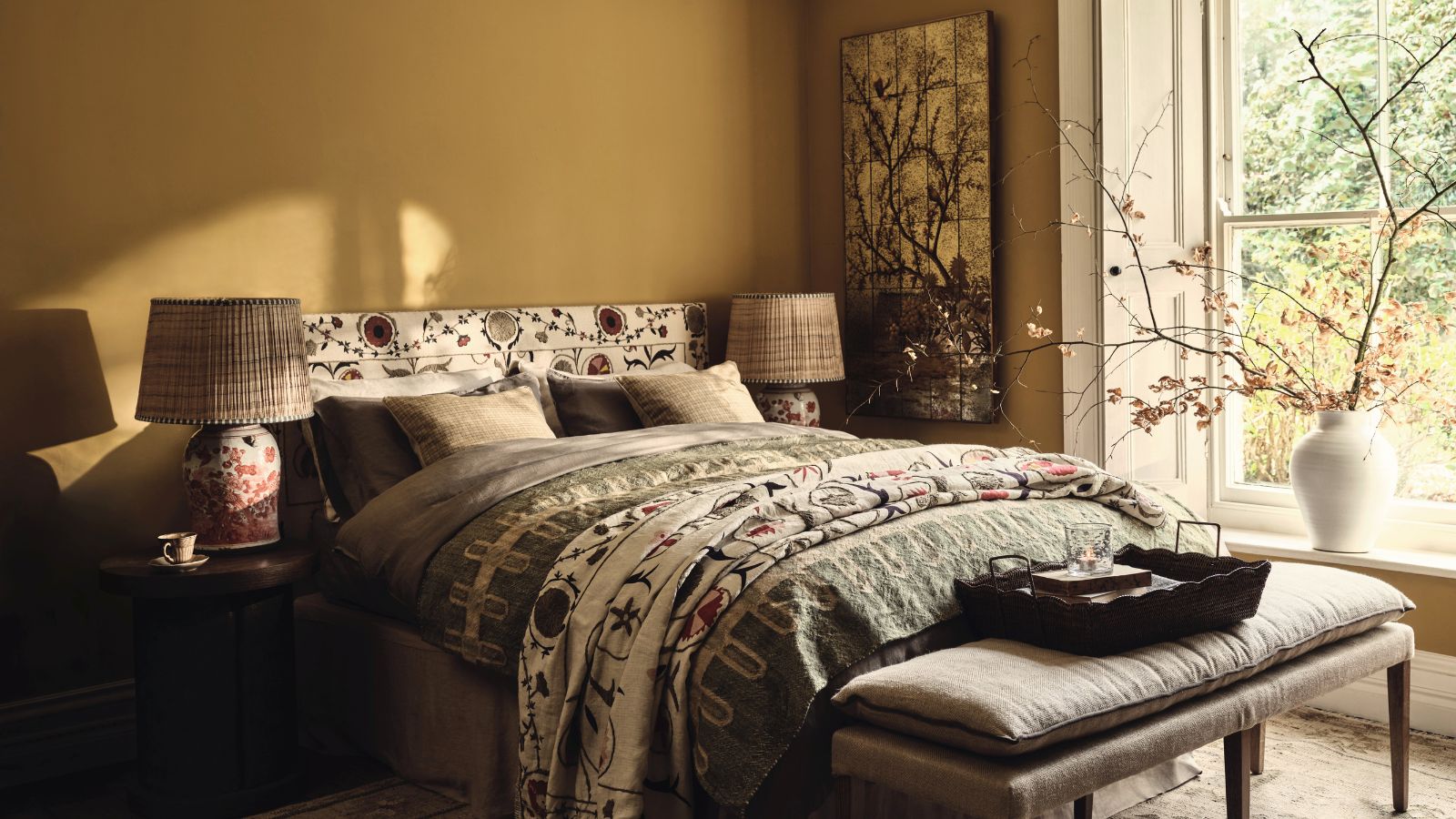 I gave the ‘try-for-five’ method a go in my small home – it's a brilliantly easy way to beat chore procrastination in seconds
I gave the ‘try-for-five’ method a go in my small home – it's a brilliantly easy way to beat chore procrastination in secondsThis method is great for those with executive dysfunction
By Chiana Dickson Published
-
 Josh Brolin’s maximalist living room: love it or hate it? Our readers were split, but where do you stand on this memorabilia-packed space?
Josh Brolin’s maximalist living room: love it or hate it? Our readers were split, but where do you stand on this memorabilia-packed space?Maximalism has a way of dividing opinions among design aficionados, and few spaces are quite as decisive as the actor's unique, yellow living room
By Megan Slack Published